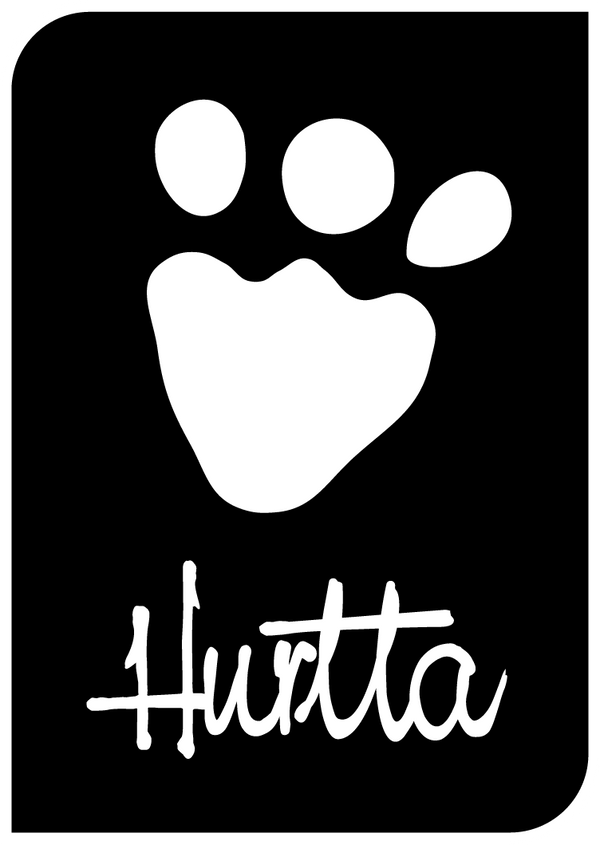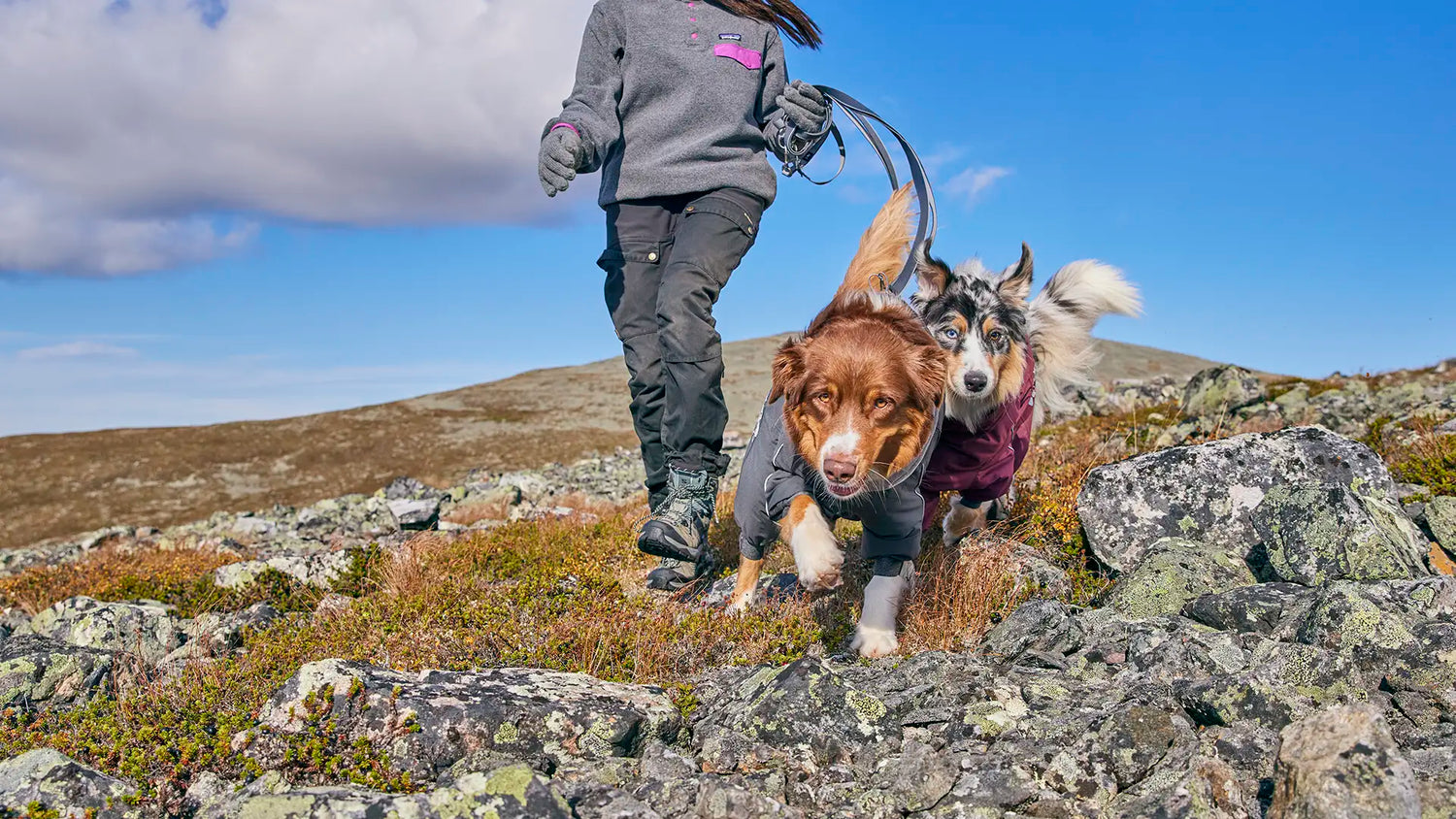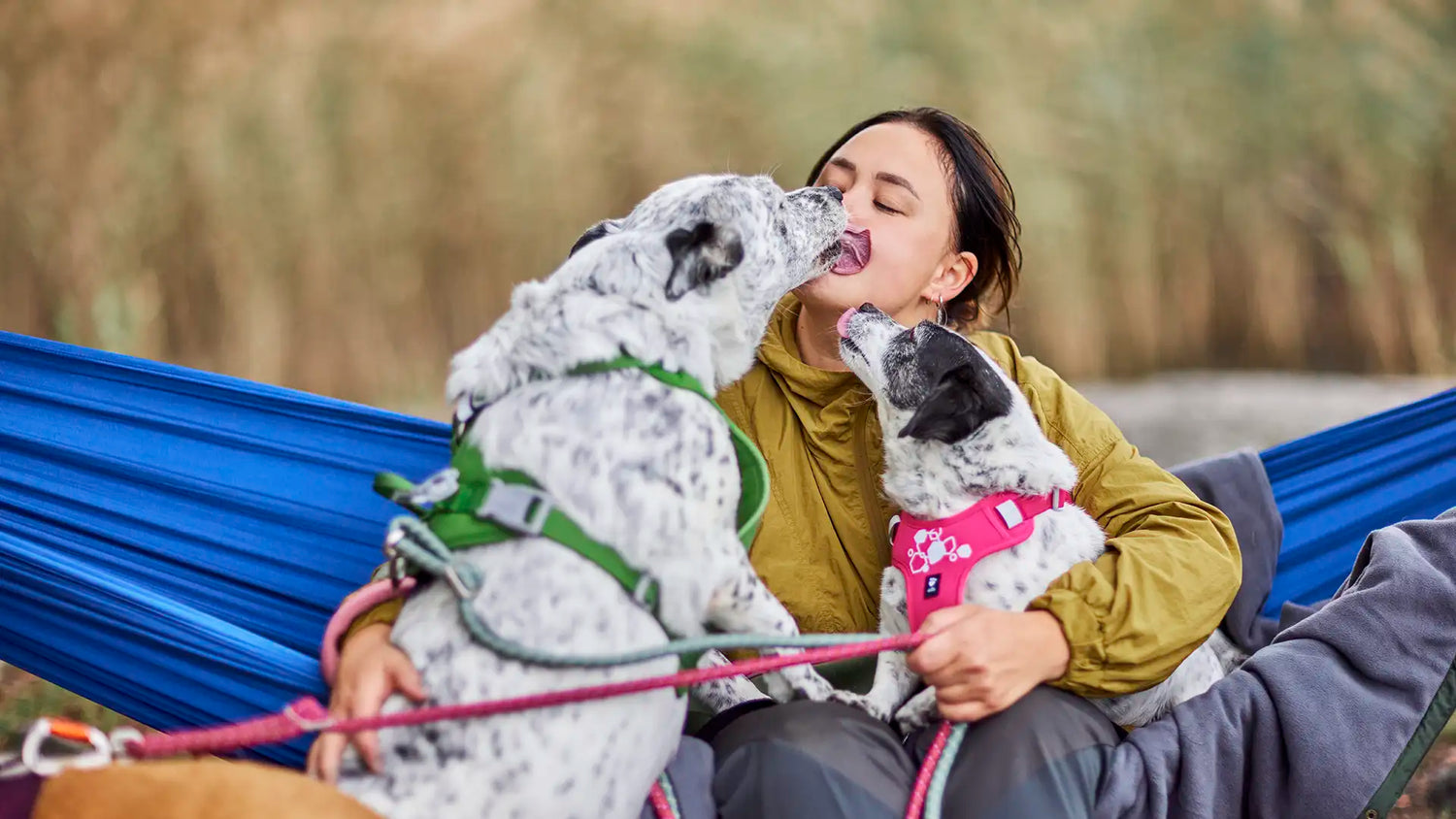The growth years
Puppyhood is a short and magical stage. A tiny dog arrives in your home, curious about everything and changing almost daily. In this early part of the dog growth stage, both the body and the mind are developing quickly. This is a time for gentle support, exploration, learning, rest and forming the foundations of confidence. Small experiences have lasting influence at this stage.
As your dog moves from puppy to junior, the world begins to make more sense. Movements become steadier, emotions grow bigger and curiosity remains constant. Thoughtful routines, calm guidance and well-chosen gear help your young dog grow into a balanced adult. This period is often described as junior dog development, where steady support matters more than perfection.

When is puppy and junior age?
When we talk about puppies and juniors, we generally mean dogs aged from 0 to around 18 months.
Around 1.5 years, many dogs will have reached their adult height and proportions. However, the chest, muscles and in some breeds even the head continue developing for longer.
- Small and medium breeds such as Shetland Sheepdogs, Tibetan Spaniels and Beagles often reach full adult structure between 2 to 3 years
- Large and giant breeds, especially guardian types such as Pyrenean Mastiffs, Leonbergers and Rottweilers, may continue developing until 5 to 6 years
Signs your puppy or junior dog is healthy
Healthy growth shows up in daily life, not just in measurements. Common signs of healthy puppy development include:
- Curiosity and interest in exploring
- Playfulness balanced with rest
- Improving coordination and growing confidence
- A steady appetite and regular digestion
- Deep sleep after activity
- A changing coat that continues to soften and mature
The goal during this stage is not perfect behaviour. It’s progress, comfort and confidence.
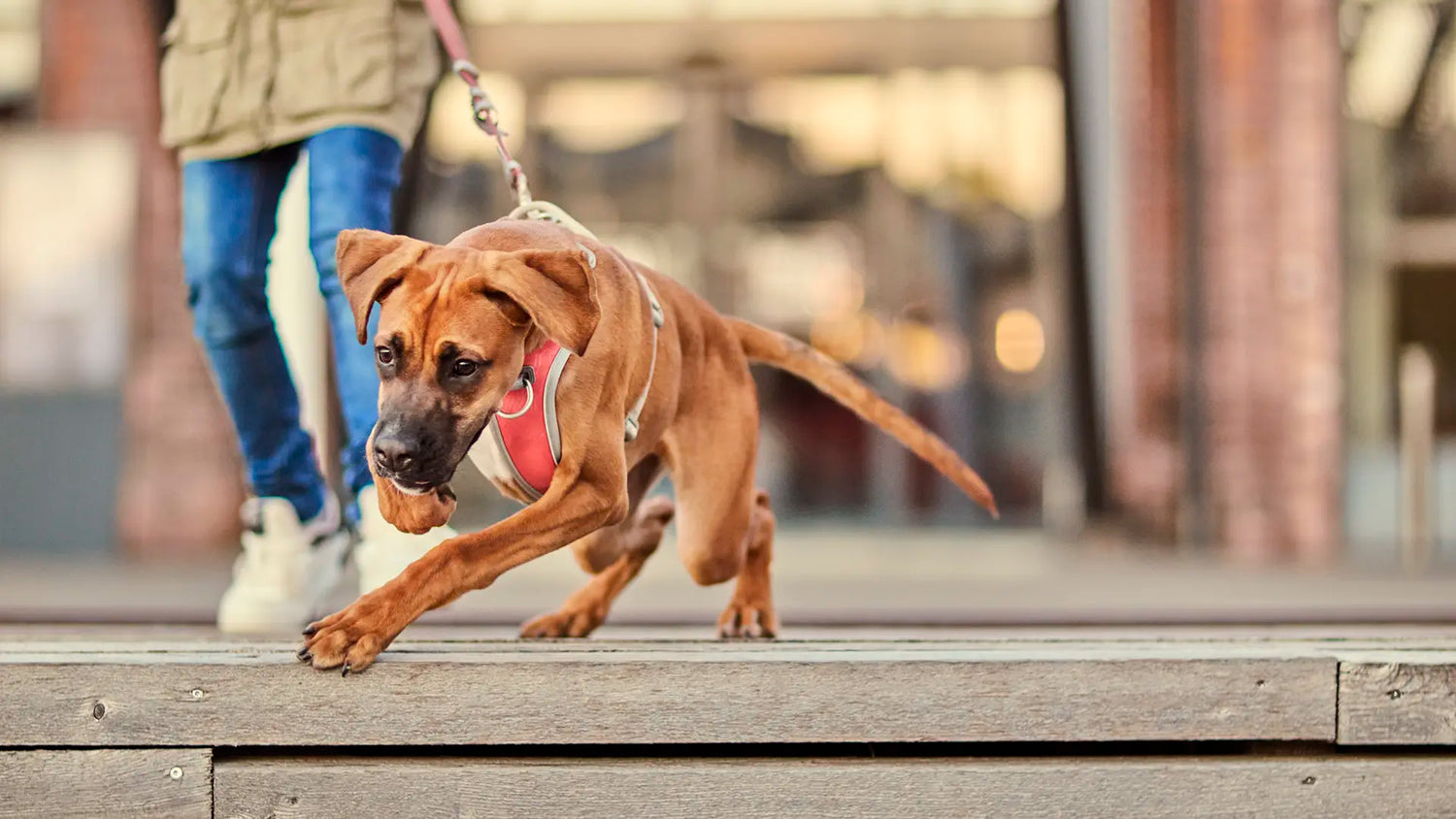
Choosing the right clothing and equipment for puppies
Whatever breed you have, the most important things to look for when choosing puppy clothing and equipment are softness, lightness and adjustability.
For most young dogs, a puppy harness and leash combination is a more comfortable option than a puppy collar, as their neck and spine are still developing. Avoid placing too much pressure on the neck in early training. A collar on a puppy can still be used for ID tags and short, gentle handling moments, but the harness on a puppy gives better support during movement and exploration.
Puppies are curious and keen to experience the world. Safe exposure to new places, sounds, people and dogs helps them grow into confident adults. Gear that feels comfortable and offers gentle control makes learning easier.
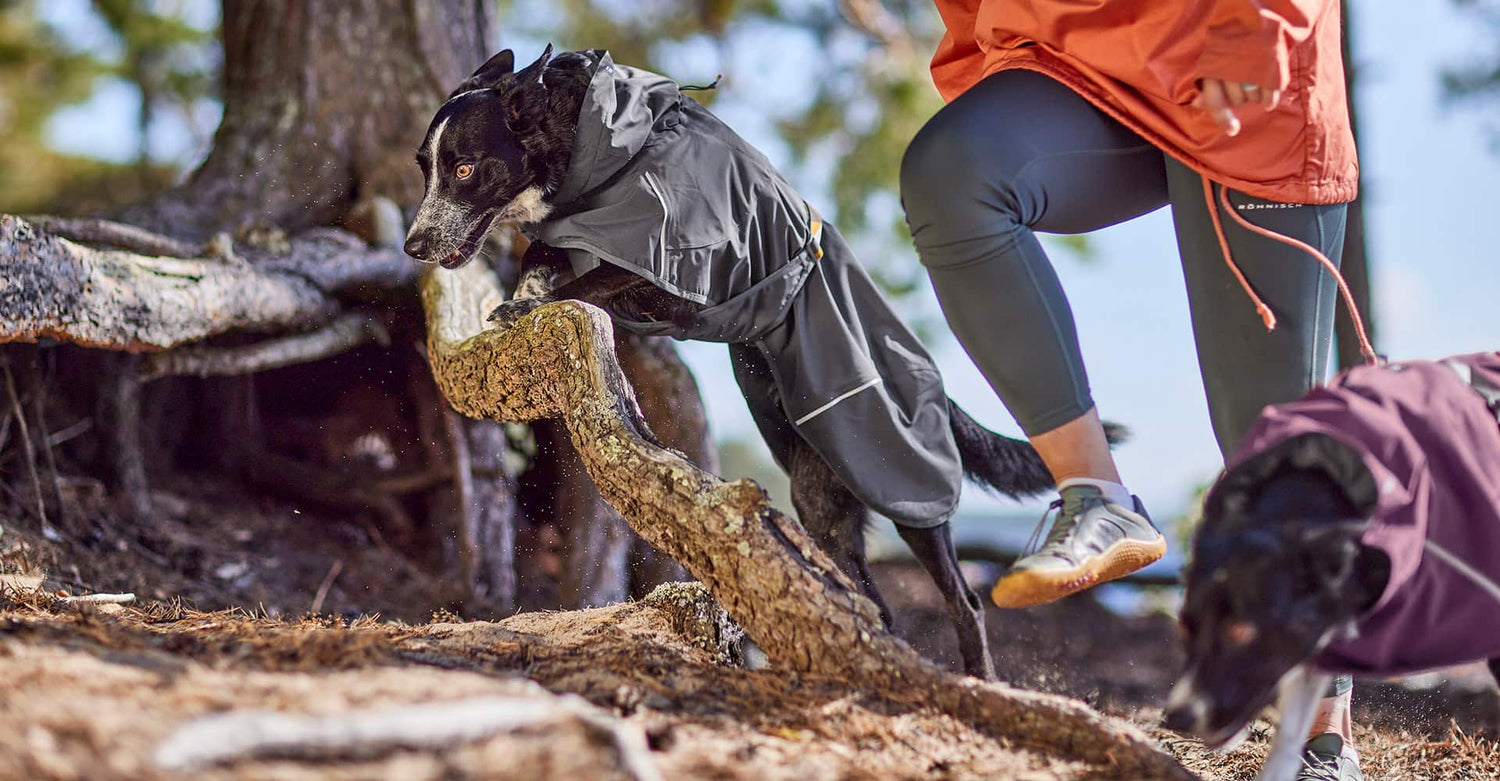
Mudventure Coat ECO
A lightweight coat that shields from rain and wind on early outdoor adventures.
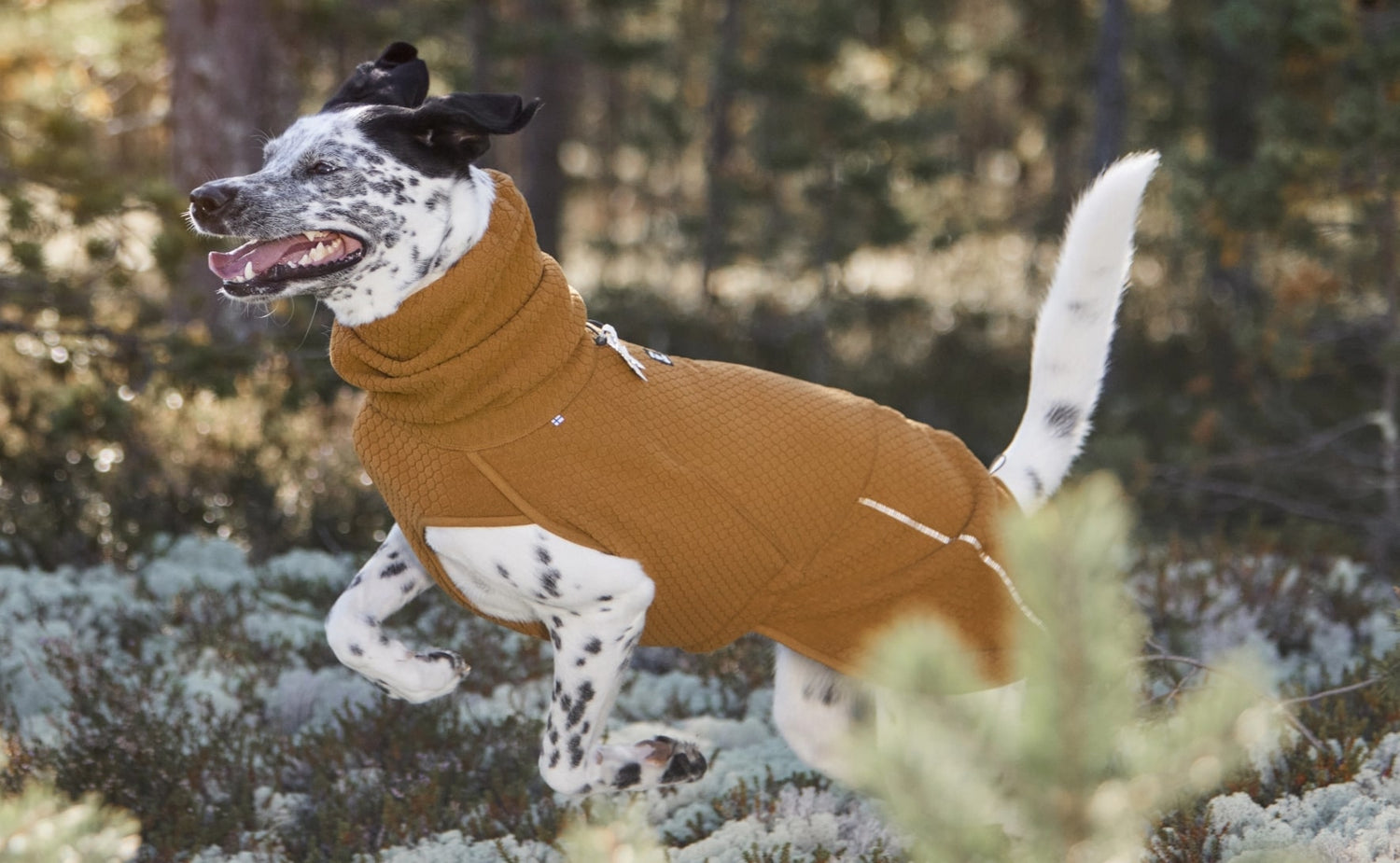
Warming Midlayer
Soft warmth that is quick to put on and easy to layer under a raincoat.
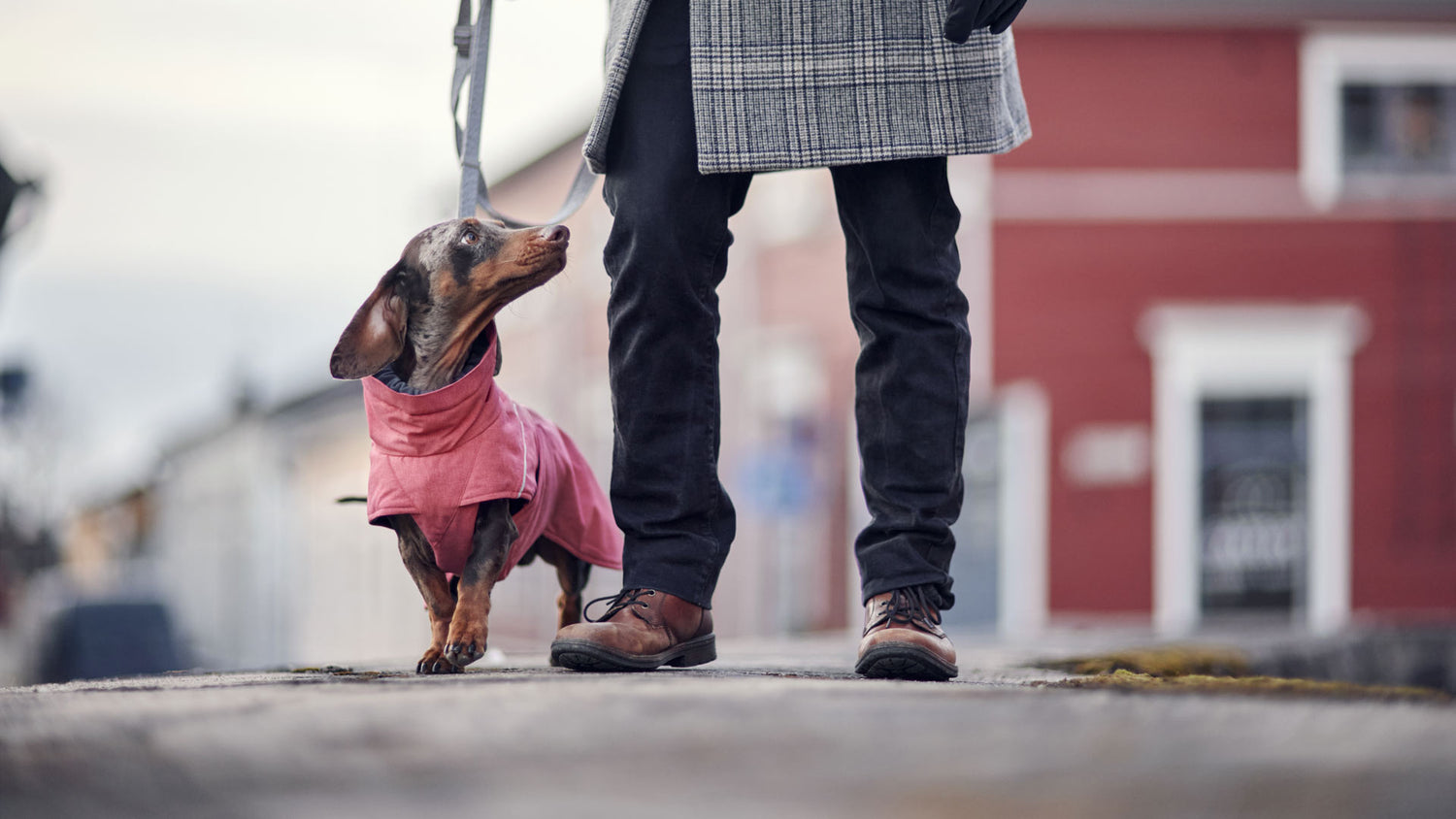
Choosing the right clothing and equipment for junior dogs
After puppyhood, the junior phase begins. Both body and mind continue developing here. Some young dogs stay confident and eager, while others may briefly become cautious, excitable or boundary-testing.
A previously confident dog may suddenly hesitate in familiar situations. A calm dog may try new boldness. Skills such as house training or gentle mouth use may temporarily slip. Hormonal changes, including a female dog’s first heat cycle, can also affect behaviour.
This stage is normal. It’s part of learning who they are.
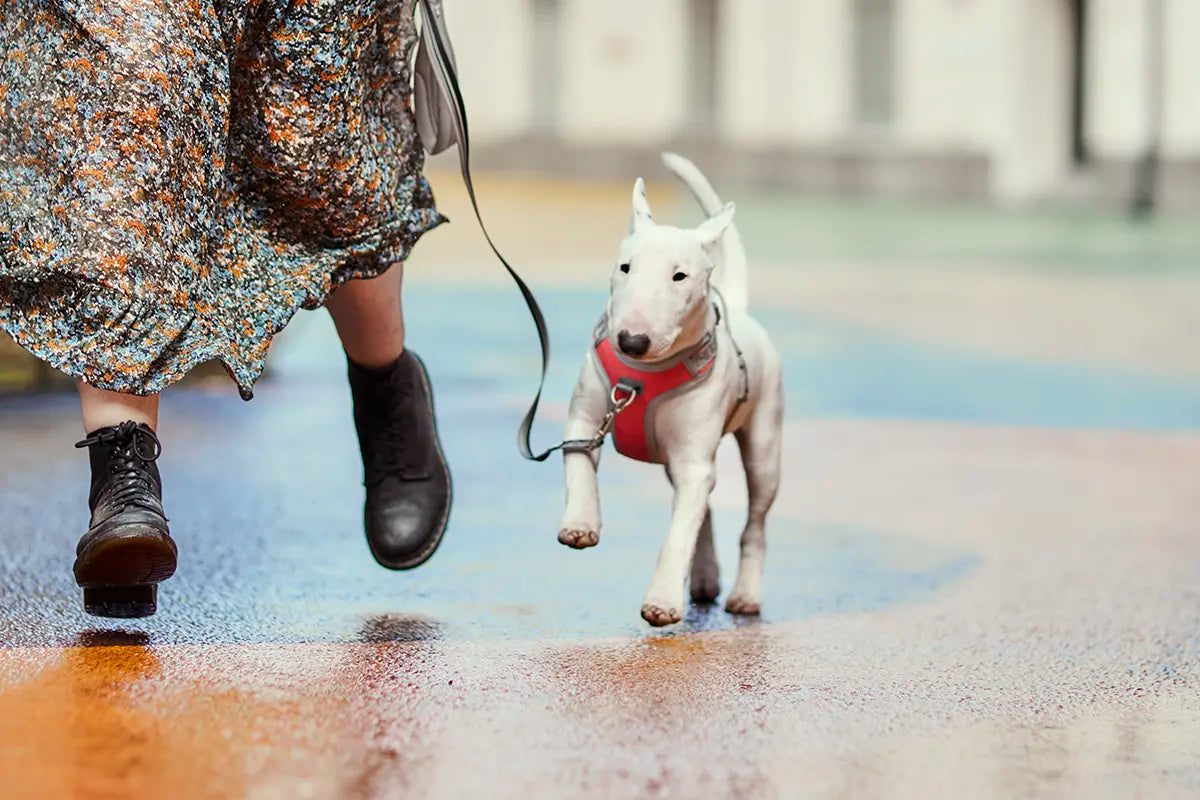
Venture No-Pull Harness
Supports gentle leash manners and makes walks more enjoyable during higher-energy months.
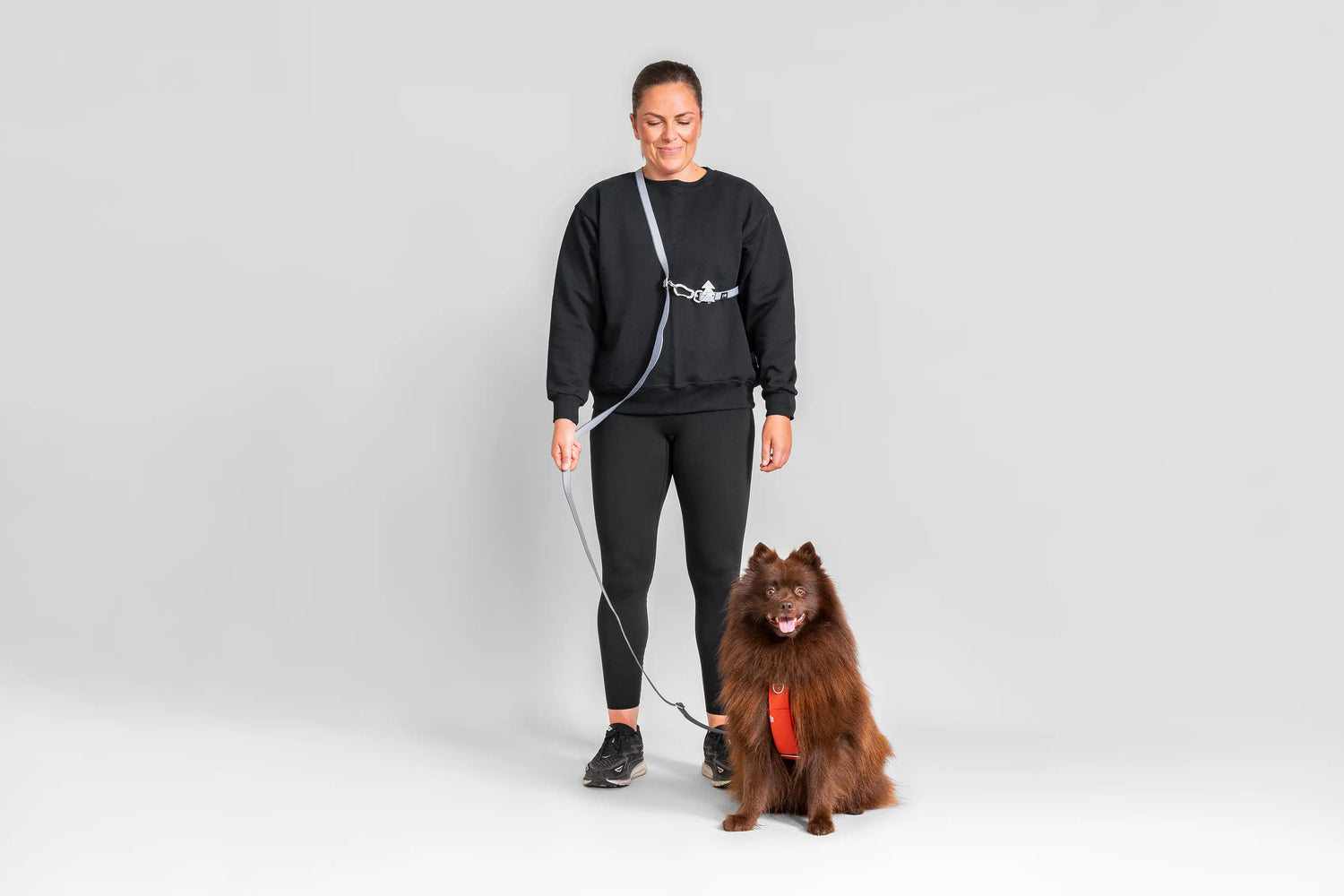
Multilong Leash II
The movable ring allows length to adjust as confidence, skills and environments change.

What the developing coat tells us about a puppy or juniors needs
A puppy’s coat is still developing. Soft and thin, it’s yet to offer strong protection from rain, cold or wind. Early outdoor time is best kept warm, short and supported with weather-appropriate layers.
During the junior phase, the coat begins shifting into the adult texture. Long-coated breeds may need more brushing as the puppy coat sheds. Without brushing, the new adult coat can tangle.
A young dog with a changing coat may chill more easily in wind or rain. A lightweight coat or warming layer helps keep the dog dry and comfortable.
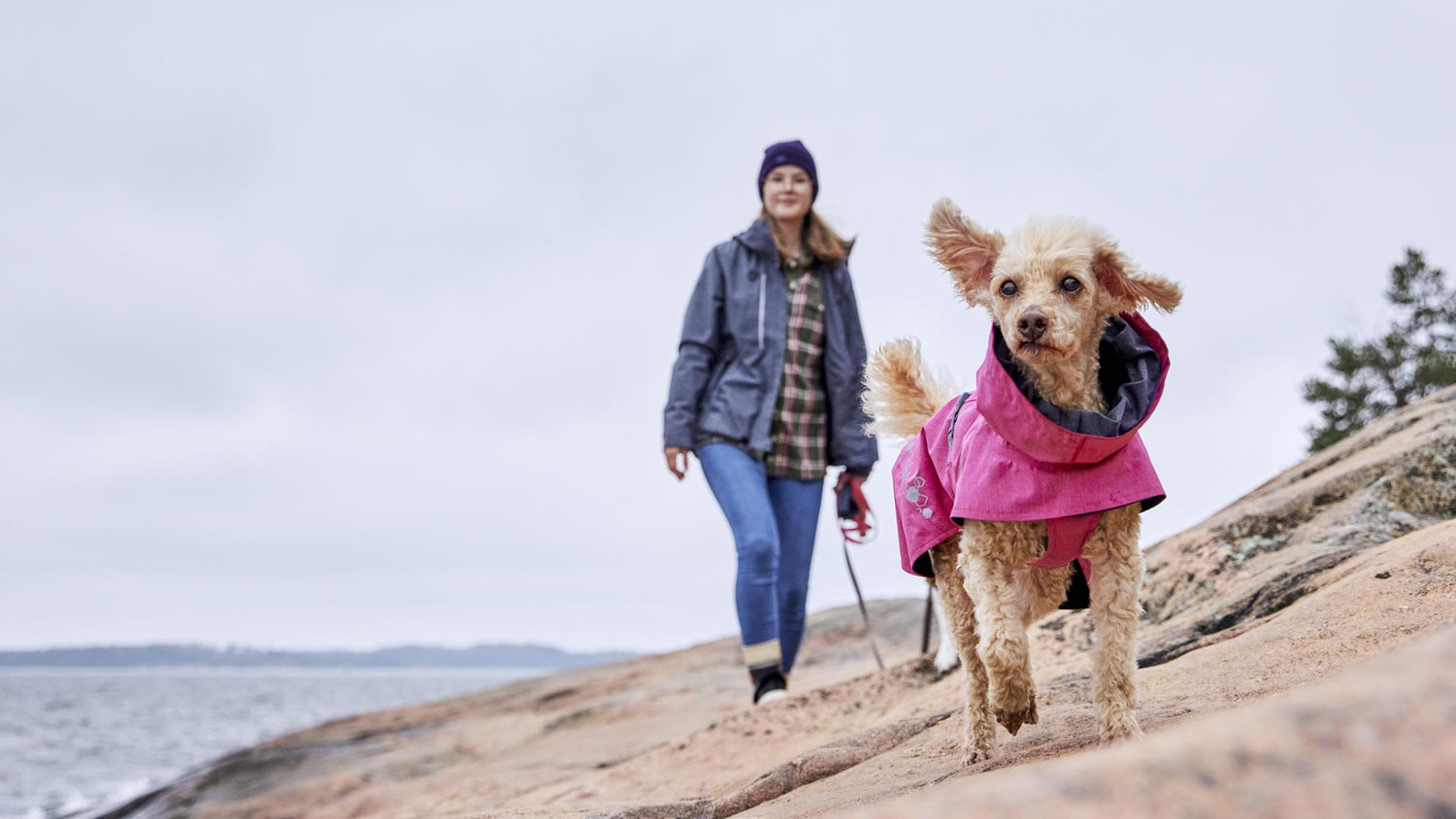
Monsoon Coat II
The woven, smooth lining is comfortable and does not snag or tangle changing coats.
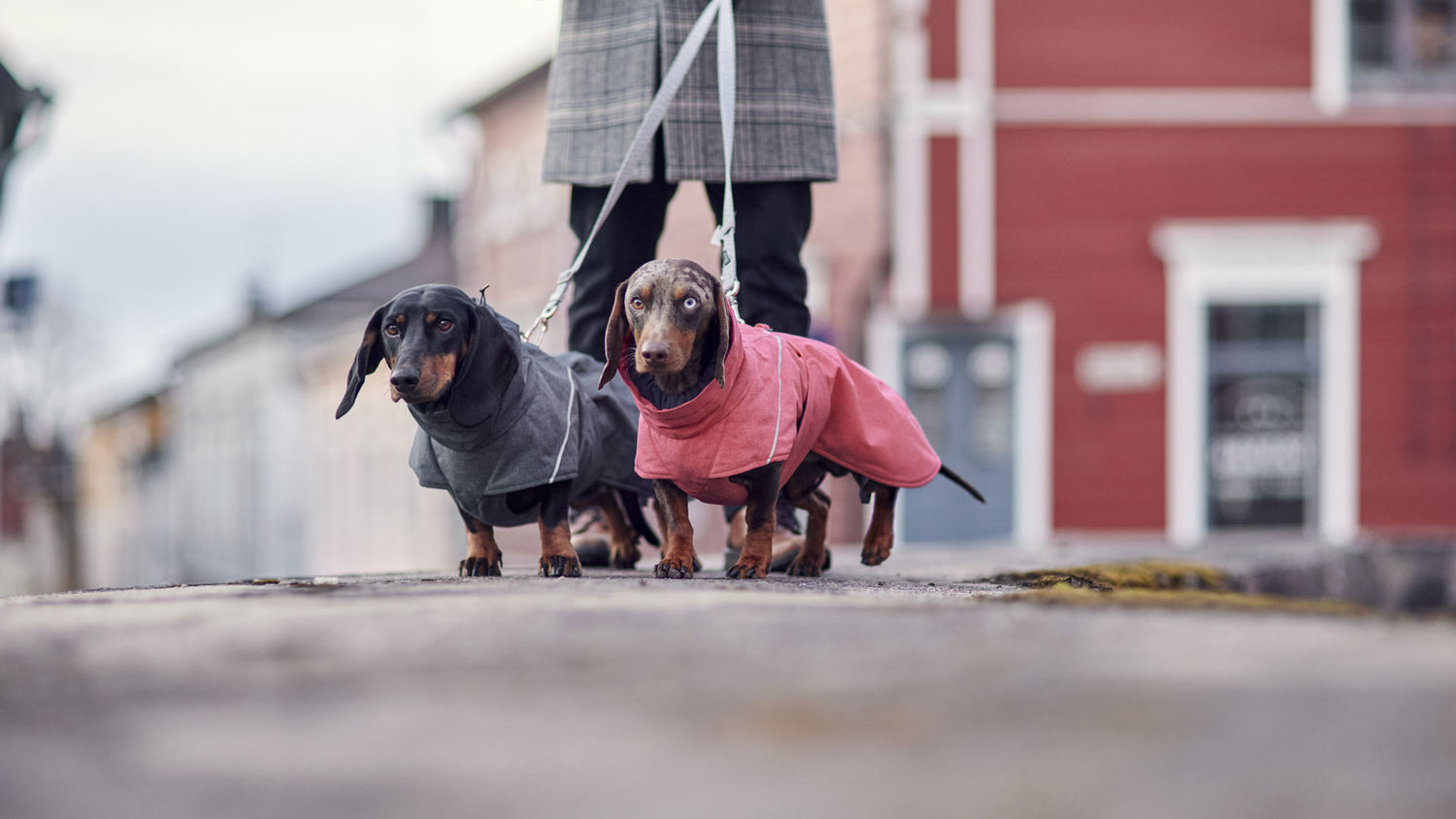
Expedition Parka II
A simple everyday jacket that stays in place while allowing free movement and play.
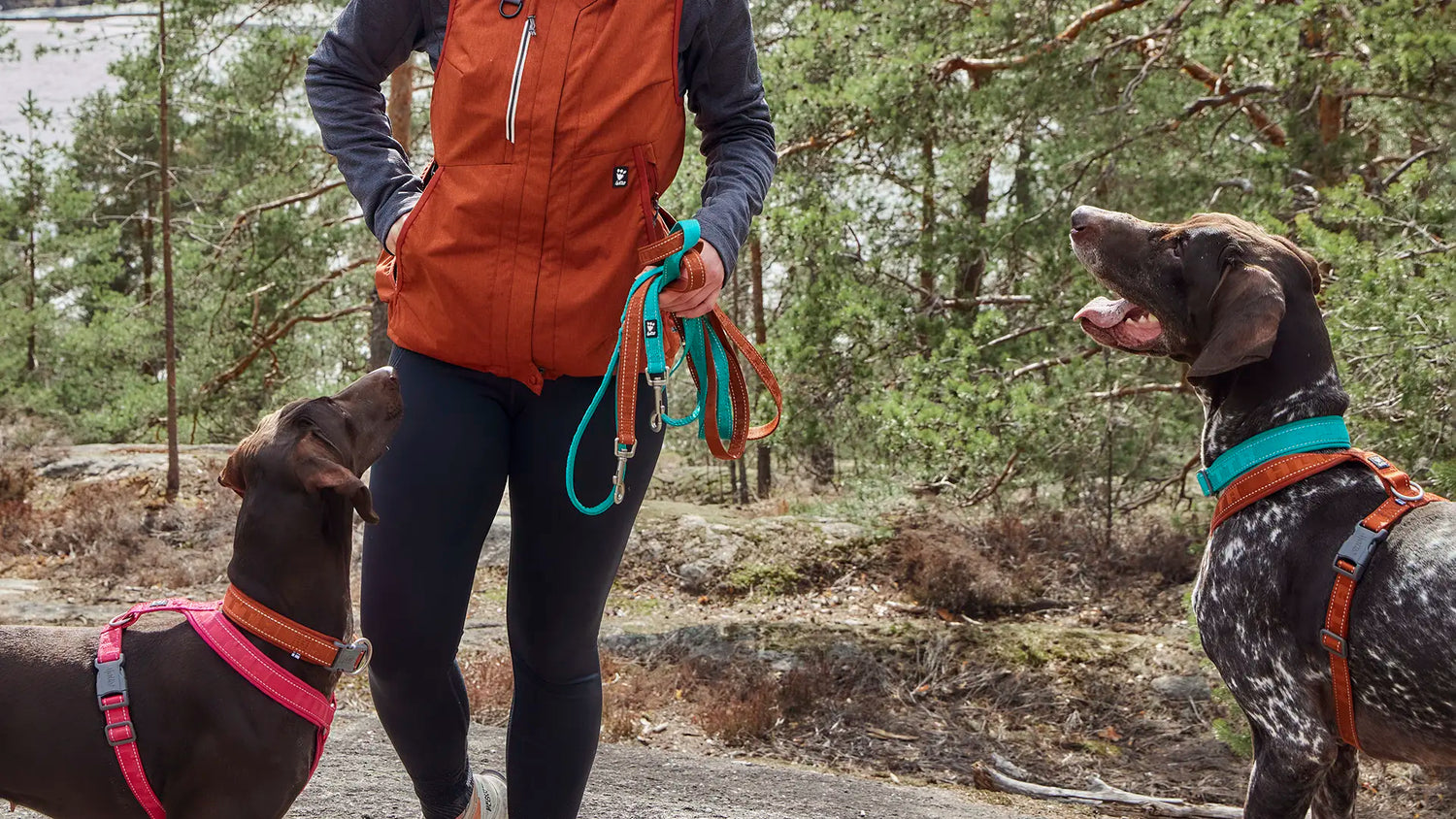
Puppy and junior training, exploration and social development
If a young dog takes a step back in skills, the most helpful response is spending more calm and safe time together. Think varied terrain, relaxed sniffing walks and gentle exploration support growing muscles and steady emotions. Calm social contact with friendly people and well-mannered dogs builds confidence.
Encourage:
- Short adventures in new but comfortable environments
- Time to sniff and observe without rushing
- Rest after excitement
- Familiar routines and gentle repetition
Growing from puppy to junior is a journey full of change. The body grows, the mind expands and the coat transforms. There is a lot for a young dog to take in. The right gear, warmth and time together can offer stability while everything else is new.
Warmth and recovery for puppies and juniors
Puppies and junior dogs are still learning how to stay warm and bounce back after play or new experiences. Their coat is soft and light, so they can cool down quickly in wind or colder weather. Keeping outings short, mixing activity with calm time, and offering warm, comfortable layers helps them relax, settle and grow with confidence.
